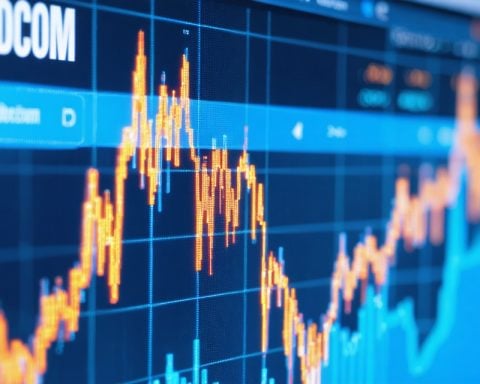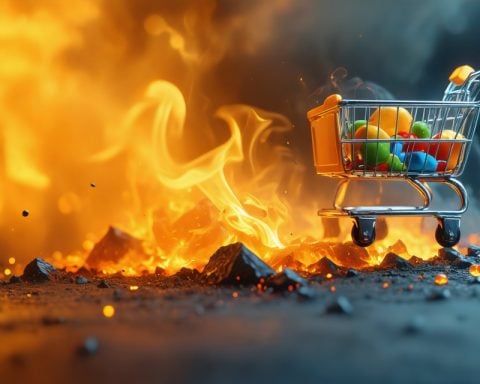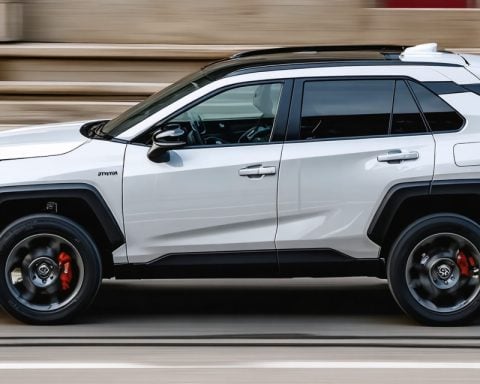- India faces significant challenges in its energy transition due to dependence on Chinese imports.
- China’s manufacturing dominance complicates India’s efforts to achieve self-sufficiency in renewable energy supplies.
- In 2024, China’s trade surplus is projected to approach one trillion dollars, further emphasizing India’s vulnerability.
- Dependence on China for crucial components like lithium-ion batteries poses risks to India’s supply chains and costs.
- Currently, 75% of India’s lithium-ion batteries and over 80% of solar panel components are sourced from China.
- India’s government is focused on building domestic capabilities and fostering innovation in advanced battery technology.
- Strategic self-reliance and international partnerships are key to redefining India’s energy future.
As India grapples with its energy transition, China’s overwhelming grip on global exports poses a significant roadblock. The latest Economic Survey reveals that India’s reliance on Chinese-manufactured goods complicates efforts to ramp up renewable energy production. In a world where Beijing has become a manufacturing colossus, India’s struggle for self-sufficiency in critical supplies becomes even more pronounced.
China, with its staggering trade surplus nearing one trillion dollars in 2024, has flooded international markets, leaving India vulnerable. The survey stresses India’s precarious position, indicating that dependence on Chinese imports for vital components—like lithium-ion batteries, critical minerals, and renewable energy infrastructure—threatens to disrupt supply chains and inflate costs.
Currently, 75% of India’s lithium-ion batteries hail from China, highlighting a staggering gap in local production capabilities. As India targets Net Zero emissions by 2070, the obstacles multiply. With over 80% of solar panel components now produced in China, and similar statistics for wind energy and batteries, it’s clear: China controls the strings of the global renewable energy puppeteering.
Yet all hope isn’t lost. India’s government is diligently working to build domestic supply chains and innovate in advanced battery technology. The strategy prioritizes self-reliance through research, development, and forging international partnerships.
As the battle to mitigate dependence on China continues, the message is clear: India must seize this moment to redefine its energy future and harness its potential as a self-sufficient leader in renewable energy.
Breaking Free: India’s Quest for Energy Independence Amidst China’s Dominance
As India strives for energy independence, the country faces a formidable challenge due to its heavy reliance on Chinese manufacturing, particularly in the renewable energy sector. Recent developments shed light on critical aspects of India’s energy transition, including fresh insights into innovations, market analysis, and potential strategies for reducing reliance on Chinese imports.
Innovations in Battery Technology
Advanced Battery Development
India is investing in advanced battery technologies aimed at reducing dependence on imports. Companies are exploring alternatives to lithium-ion batteries, including sodium-ion and solid-state batteries, which could provide more sustainable and cost-effective solutions. Indian startups and research institutions are increasingly collaborating to develop home-grown technologies that could eventually replace imports.
Market Analysis and Forecasts
Rising Local Manufacturing Initiatives
According to industry forecasts, India’s local battery manufacturing market is expected to grow significantly. By 2027, local production is projected to account for over 30% of the lithium-ion battery market, indicating a robust push toward self-sufficiency. Government incentives and policy frameworks are essential catalysts for nurturing domestic producers.
Security and Sustainability Aspects
Concerns About Supply Chain Vulnerability
The reliance on a single foreign supplier for critical components poses significant security risks. Efforts to diversify the supply chain by establishing partnerships with countries like Australia for lithium and other minerals are in progress. Such strategies not only enhance energy security but align with sustainability goals as they promote responsible sourcing of materials.
Key Questions Addressed
1. What steps is India taking to enhance its energy independence?
India is focusing on building domestic supply chains, investing in advanced battery technology, and forging international collaborations. Government initiatives are being directed toward research and development, while domestic production capabilities for critical components are being established.
2. How significant is the reliance on Chinese imports for India’s energy goals?
Currently, over 75% of India’s lithium-ion batteries and more than 80% of solar panel components are sourced from China. This dependency poses risks for India’s energy transition, particularly as it aims for net-zero emissions by 2070.
3. What markets are emerging as potential alternatives for sourcing critical minerals?
Countries like Australia and Chile are stepping into the spotlight as reliable sources for lithium and other essential minerals. India is actively working to establish trade relations and partnerships with these nations to secure a stable and reliable supply chain.
Related Links
For more detailed insights, visit these links:
NITI Aayog
Ministry of External Affairs, India
Ministry of Statistics and Programme Implementation
In conclusion, while China’s grip on global exports presents a challenge, India’s proactive approach toward innovation and diversification showcases the potential for transforming its renewable energy landscape. The ongoing efforts could redefine India’s role as a self-sufficient leader in sustainable energy.













